#meta theory
Explore tagged Tumblr posts
Text

More Drosselmeyer ramblings, so a continuation from this post
I just really like the potential behind Drosselmeyer’s motivations. We know he clearly wants a tragedy. But taking into consideration the reveal of his backstory and how the nobility and monarchy exploited his powers for wealth adds another layer to his stories. So two of the stories he’s written is The Prince and the Raven and the Ghost Knight.
For the first, he’s wholeheartedly set on destroying this beloved prince, the figure of the kingdom’s worship. But the prince is also connected to the monarchy—the same crown that turned against him. Drosselmeyer’s set on a tragedy for the monarchy-proxy. And the knight who’s so loyal to the prince just gets sliced in two. His devotion to serving the prince is ultimately fruitless.
For the latter, the main knight is wholly devoted to the crown and its war. He even betrayed his own lover for the sake of the crown, all for it to betray him. He was basically exiled and discarded when the throne decided he wasn’t needed anymore. In a sense, his own loyalty cemented his end. And it’s shown to mirror Fakir, but it also mirrors Drosselmeyer.
The monarchy had no issue exploiting his abilities for their own sakes. They already had wealth and power but demanded he bring them even greater riches. And his stories did grant their wishes. But they were the ones who turned against him, the same way the kingdom failed the ghost knight after he served out his duty. The story shows the consequences the monarchy has on those who serve it.
And my personal headcanon is that the Bookmen are connected to the original fallen nobility who initially demanded his powers to grant their wishes. They’re so scared of his powers because they’re exactly the ones who wanted to capitalize them. But then they were unable to ultimately control Drosselmeyer or his descendants.
That maybe Drosselmeyer’s so obsessed with tragedy because his own life was a tragedy. The family tree Autor shows Fakir depicts that he did get married and have children. But when the king and nobles turned against him, they took all of that away. He doesn’t believe in the concept of hope or a happy ending because he never got the chance to have one. And if everyone thinks he’s evil anyway, then he might as well have fun with it.
#drosselmeyer#princess tutu#ptutu#meta theory#also what happened to his other descendants and what role did their story-spinning powers play?
62 notes
·
View notes
Text
WHAT IF ALL OF THE FEMALE TOUR CHARACTERS ARE ACTUALLY STAGES IN THE LIFE OF ONE WOMAN?
Disclaimer: I'm not 100% sure I'm the first person to have this theory/idea. We stand on the shoulders of giants etc
So, I've been getting really into the various tour date anniversaries, and it's brought something to the front of my mind that wasn't before: the order the outfits appeared in, and the fact that most of the outfits are roughly in historical order, for the vintage style of each garment.
Acknowledgements about possible issues with this theory at the bottom.
There's a segment in Shakespeare's As You Like It which goes through the seven ages of man. As listed in the play, these are: the infant, the schoolboy, the lover, the solider, the justice, old age, and eventual oblivion. So, what if Gerard's outfits are the ages of woman? Cheerleader > nurse > lady/wife > office worker > eventual oblivion. Nashville > Detroit > Riot > Firefly > Ring of Fire.
I'm allowing a bit of wiggle room for slight anachronism in the styles of the various dresses as I think Gerard and Marina were more concerned with the overall look & impression of the outfits than with being 100% historically sound.
So, let's take just the dresses (and Alpharetta), and go through - in the order these outfits appeared on the tour.
The Cheerleader
Let's imagine a woman born around ~1945. Maybe 1944 or 1946. She'd be 16 in ~1960. And she's a cheerleader!

x
The Nurse
She gets a bit older, and becomes a nurse. Nurses in the 50s and 60s tended to be young and unmarried. Our hypothetical woman would be 24 in 1968.

x
This is just about right for our Prettiest Nurse In The Whole World - the dress pre-dates the shift for nurse attire from dresses to scrubs, but could easily be a later 60s silhouette (straighter, slimmer fit compared to the "new look" fluffier skirts of the 50s and earlier 60s).
The Lady/ The Wife
I think this both overlaps with and leads into Riot. This is her when she's off duty.

x
This is very easily a late 60s look. It was also common in the 50s and 60s for women to quit working upon getting married, or even be forced from their jobs upon getting married. There were parts of the world even where nurses were not allowed to be married. Perhaps Riot is not only the nurse off duty, but also a transitional outfit, symbolizing who she's becoming, as she ages into the next phase of her life - the wife. Maybe she has kids, even, in this space. And then...falls off the radar a bit. Perhaps the fact that we lose track of her for a bit in the "timeline" is in itself relevant.
The Office Worker
The office worker takes us through multiple outfits, and a pivotal point in history. Through the late 60s and 70s, it became increasingly acceptable and common for women with children to re-enter the workforce. So, we assume she has kids, maybe, and when they're 6, 7, 8 - old enough to go to school - she goes back to work, perhaps in the mid 70s. You know what looks quite 70s?

x
Good old Alpharetta.
From here, I think, we follow her through her career. Firefly is sometimes called the teacher, but there's no particular reason to assume that. The only real evidence is Gerard's joke "you get this at the end of class," and I don't know that they meant anything in particular by that. So what if Firefly isn't a teacher, but just a further evolution of office worker?

x
This could easily be a very late 70s or early 80s office worker fit. Our hypothetical woman would be in her 30s at this point, which feels quite right for this look. Which takes us toooooo Auckland.

x
This still feels quite 70s, actually. There was obviously quite a bit of shifting and minor changes to what we call the Dead Secretary over the course of ring of fire, but if you assume you're looking at an office worker's wardrobe from the late 70s onwards (and we accept that Brisbane 2 was just for the sex appeal), it all follows fairly smoothly. And so we move on to
Eventual Oblivion
When the Dead Secretary Dies.
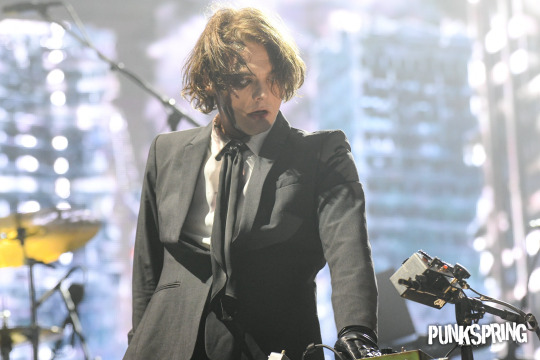
x
If we assume that the prevailing theory that the character from Ring of Fire is implied to have died on 9/11 is correct, that puts this fit in 2001, and makes our hypothetical woman 55ish years old. It's hard to think of 2001 as vintage, but it is to some extent - and the skirtsuit here is actually a bit more 2001 than it is modern, with its shoulderpads and pantyhose. This is very much what a 55 year old woman with a closet slightly out of date might have worn to an office job in 2001 (if we discount the gloves, which, Character Choice). I've seen it recently pointed out that the outfit changed and then stopped changing - and it DID! It stops changing when the contacts come out. The outfit stops changing when she dies.
Obviously, like I said, it's not perfect. I'm allowing some stylistic wiggle room with dates and clothing eras. But when you look at the feminine outfits overall, there's a striking order to them - they seem to be traveling forward in time, aesthetically, from the 50s to the 2000s, in a fairly consistent way.
But wait, what about -
Joan of Arc: I don't count Joan of Arc as part of any tour "canon," plot or concept. Joan of Arc is her own thing, we know Gerard loves Joan of Arc, she stands alone.
Houston - Houston is the one real non-canon/non-fitting dress here. Interestingly, it does actually fit nicely in the chronology of the outfits over the 20th century - the Manson girl fit would be late 60s/early 70s, which slots in just fine after Alpharetta. I'm not sure, though, if it makes sense as an event in the life of our hypothetical woman - she would have to be in her 30s at the time, and already have had a number of phases of her life, which seems doubtful for a Manson girl - but frankly, who knows. I do think, as much as I risk sounding like I'm disregarding things that don't prove my theory, it's important to remember this is Gerard we're dealing with, and while they most certainly have a concept or story they're working off of, they also will Do What Ye Will depending on the vibe of the moment. The whole Manson girl thing fits nicely into the overall theme of disparaged and victimized women, and fits well into the overall vibe, so I don't think its existence disproves the previous theory. Gerard very well may have just wanted to do a Manson Girl fit and thus he did - we may never know. Or maybe I'm completely wrong about everything I've said!
I don't know if this is what was intended to be the "story" of the tour but it sure does work nicely and I have to admit I am sort of obsessed with it now. It fits nicely, the chronology is fairly clean, and it feels like something Gerard is always trying to do - to tell a story.
#mcr#my chemical romance#gerard way#gerardposting#meta#long post#meta theory#swarm tour meta#idk y'all this might be crazy rambling. but i think i'm a genius#this is all the brain i have to spare for the week
27 notes
·
View notes
Text
So like. The way Alphys’s view on humanity is through anime, ie a very unrealistic usually romanticised and generally more positive+less mundane than human lives are in reality. And the way that parallels the way that we see this mostly cute, fun representation of the monsters’ lives underground while playing Undertale as a video game.
We don’t see them grappling with re-building society from the ground up upon being sealed underneath the mountain. We don’t see them struggling with being forever trapped in an enclosed space. We don’t see the worry of overcrowding and eventually outgrowing the space or running out of resources. Not really. Some of these things are touched upon but never really, emphasised, in the story.
Idk I just thought that was a cool parallel or whatever.
#undertale#undertale analysis#undertale theory#meta theory#undertale meta#utdr#narrative analysis#meta analysis#Asher’s Ramblings
6 notes
·
View notes
Text
Await hold on!! What if...
Fakir kidnapping Mytho and holding him captive, with him being of Drosselmeyer's bloodline, was what caused the Story to not move? (As intentional or subconscious as it could have been on Fakir's side.)
Because Drosselmeyer's goal with it was to trap the characters in a perpetually reoccurring cycle of Despair, right? And Fakir shattering Mytho's heart and keeping it shattered (and letting the Sword of Lohengrin rust, only to later reforge it IN HIS OWN BLOOD which is of Drosselmeyer's own line) stopped the Story, because the point of the Story was to endlessly repeat the cycle of "everyone loves the Prince - their feelings wake the Raven - the conflicts free the Raven - the Prince fights the Raven - the Prince loses his heart". (The shard that is soaked in Raven blood is Love for more reasons than one, because Love takes on many forms, and is easily tainted, as Edel has said.) By suspending Mytho in nonfeeling darkness, Fakir effectively stops the cycle of Despair.
Enter Duck, whom Drosselmeyer personally seeks out and engages by giving her the Shard of the Prince's Hope - a both real and false hope which is to both force the Story to move, make the characters blindly believe they can succeed, but also deepen the Despair the characters would feel during the climax as Hope is unavoidably betrayed. Drosselmeyer gaslights Duck and makes her temporarily forget her origin, causing her to better adapt to the Story, which probably in some way also influences the memories of other characters, including Fakir, as the Cogs begin to turn.
This would mean that Fakir, over the course of the series, and likely more instinctively than not, stops, resumes, rewinds, breaks and resumes again, and finally completely reconstructs the Story's original narrative, in that order.
Note that he meets Siegfried just around the time he causes his parents' death as well, albeit after the fact, so around the time he stops writing (actively, that we know of).
For there to be creation, destruction must occur first. Chances of failure, of re-establishing the cycle of Despair are grand, so no wonder Fakir is so wary of Tutu, and so reluctant to agree with her mission, and believe in their success. Once he does, Duck's own Hope and Faith light the way, and not the borrowed Hope, which is also a product of Drosselmeyer's writing just as much as the Prince himself.
Fakir likewise renames Siegfried to Mytho when he 'claims' him from Drosselmeyer, and personally shatters his heart and traps him in protective limbo.
Fakir also damages the Sword of Lohengrin twice, once before the beginning of the series, (inadvertently or not,) and the second time when he breaks it while enabling Tutu to win the Shard of Love from Kreahe. (Not to mention he also inspires her dance confession, because he is the one to tell her not to speak the words of love and disappear.) A sword that is meant to belong to the Knight from the Story, but is in the end wielded by Mytho. (So is Mytho/Siegfried a knight as much as he is a Prince?) The Sword's two halves transform into two swans (a motif also on its hilt) that end up pulling the flying carriage at the end of the series. The Sword is only ever reforged in blood once, it being Fakir's (bathed in the blood of the Prince's enemy, god, captor, friend, and protector). Mytho reconstructs the two broken halves by summoning the swans to face the Raven. It is also partially wielded by Rue, who slays the Raven together with Mytho.
I'm not sure how I want to end this post, but I had to out these drabbles in writing.
Also how come, while even Fakir's and Autor's memories were altered, and complacency encouraged by the Story's influence, Charon appears to have forgotten nothing at all points in time?? If even Drosselmeyer's own Heir is made to forget his origin, and his puppet of destruction (Tutu) as well? (Autor logic-ed his way to the right conclusions.) The only other people who seem to be immune to the Story's hypnosis are the Bookmen.
Was Charon secretly a Bookman who deffected from the Order to raise the Heir to Drosselmeyer in hopes of winning against Drosselmeyer once and for all? So that this poor child would neither die as a result of Drosselmeyer's sadism, nor suffer from either his ability or the Bookmen's prosecution? So that he would be the savior of the new age?
I must be reading too much into the meta... (^^')
#princess tutu#ptutu#fakir#my fic#ao3fic#mytho#ahiru#musings#drabble#meta theory#Drosselmeyer#Rue#karon#charon
9 notes
·
View notes
Text
ether as severance + “the courtship of kier and imogene” (relationship parallels)



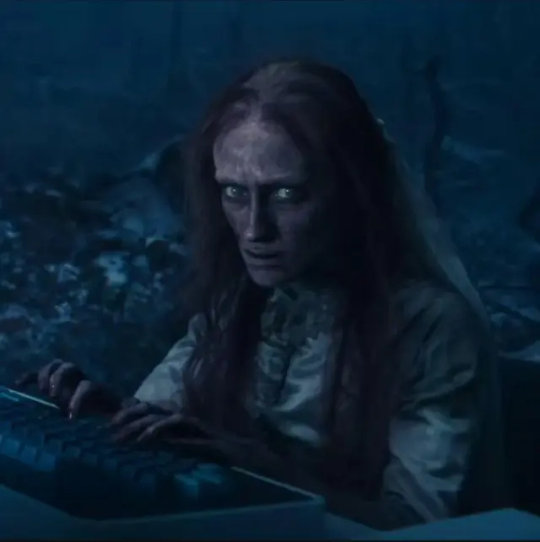
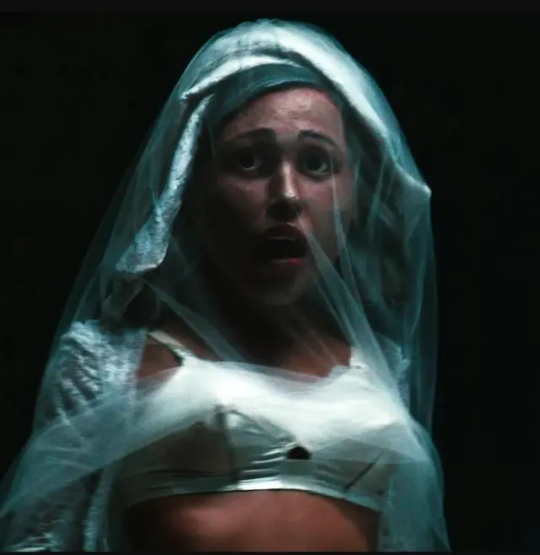
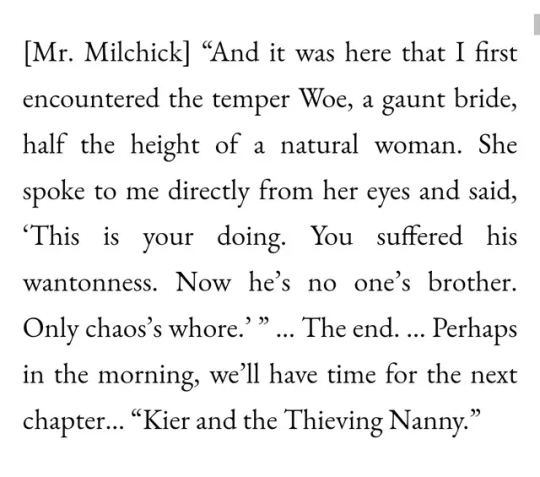



(just so we’re clear, while the kier-imogene dynamic is clearly paralleled with helena and mark, it is also reiterated in cobel and mark, dr mauer and gemma, and even burt and irving to some extent; season 2 has also made it a point to show us that helena and cobel are both victims in their own ways while being perpetrators. it is not a black and white situation and misogyny will get you blocked.)
original threads: (x), (x)
#as always. the sickening implications show delivers on the sickening implications 👍#sev notes#//#severance theories#severance meta#severance analysis#kier eagan#imogene eagan#dieter eagan#lumon industries#severance
9K notes
·
View notes
Text
I hope we’ll be seeing more of the dance - not as an actual apology necessarily, but because I’m obsessing over the fucked up memory theory and it could be a really cute reminder as to who the characters are to each other
Also what the fuck was the im sorry dance. They really just did that and there was no further context. One of them said "do a silly little jig for my forgiveness" one day and they both just. Committed. What is wrong with them I wanna study them under a microscope
#Although maybe constant apologies are not the best thing to reminisce about#or to bring up to prove you’re on someone’s side#but hey#I just want to see the dance again#gos2#Meta theory#I think that’s what it’s being called
22K notes
·
View notes
Text


oh my god the secret reddit leaks were deliberately coordinated by official sources, like an ARG. has any other tv show ever done something like that? ceaselessly making new strides, blurring all lines between fiction and reality, between fandom and licensed creators, that’s my doctor who!!!
#ivy.txt#doctor who#dw#doctor who is a tv show theory#(doctor who is a tv show FACT!)#doctor who spoilers#doctor who lux#doctor who meta#lux#fifteenth doctor#ncuti gatwa#belinda chandra#varada sethu#russell t davies#truman show theory#the language of rope#doctor who season 2#doctor who series 15#👁️
1K notes
·
View notes
Text






Kirby likes to be carried v2(two) !!
#kirby fanart#meta knight#kirby#galacta knight#king dedede#bandana dee#magolor#marx kirby#gotta be one of my favorite things to draw#just carry that little guy around with you on an adventure#late night sketching#glazed art#ALSO#I saw all kirby news from the nintendo direct#and if the theories of the dlc being about a certain Galactic menace are true I am going to explodE#not to mention Kirby AIR RIDE coming back like WHAt#very exciting things!!!
1K notes
·
View notes
Text

#spyxfamily#spyxfamily theories#sxf manga#sxf#spy x family analysis#spy x family theory#sxf theory#sxf spoilers#spyxfamily manga#spy x family manga#spy x family#spy x family manga spoilers#spy x family spoilers#spy x family meta#sxf twilight#anya forger#forger family#sxf analysis#sxf fanart#memes#sxf theories#sxf manga spoilers#tatsuya endo#anya fanart#funny memes#sxf anime#anime and manga#sxf fandom#spyxfamily anya#twiyor
1K notes
·
View notes
Text
DO NOT ASK NEIL ABOUT FAN THEORY
Michael babygirl, I apologize now for the close-up screenshots of your mouth I am going to put on the internet. Call Neil if you have issues with it, it's his fault. Brain-rotting brought on by the lovely @melbatron5000!!!

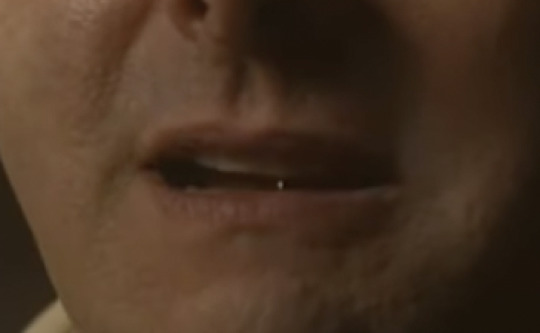
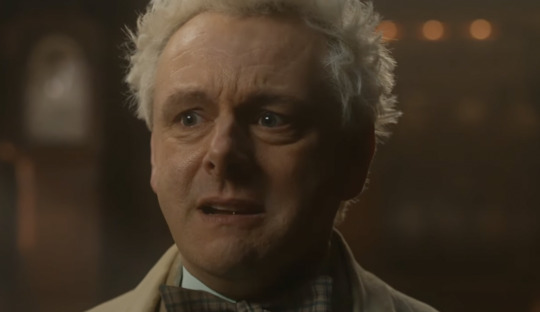
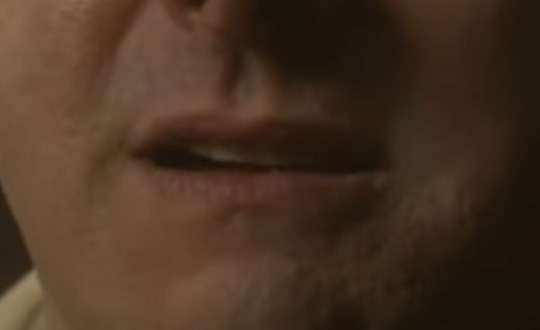
Honey, why are you chewing on a ball bearing? I was going to be lenient and say it's a glint off of some saliva but nah are you sucking on a damn pie weight. I didn't see you take a bite of any dippin dots??? Who let her near my stash of Buckyballs that I've been hiding from the Consumer Product Safety Commission? Just because you are bbgurl doesn't mean you get to eat bbpellets.
#good omens#good omens 2#michael sheen#aziraphale#good omens meta#crowley#david tennant#crowley x aziraphale#good omens theories#good omens clues#good omens theory#good omens fandom#ineffable idiots#ineffable husbands#aziracrow#anthony j crowley#good omens crowley#good omens kiss#i zoomed in and gurl its just so round#like perfectly round#they really did the bullet catch 2.0 didnt they
4K notes
·
View notes
Text
Okay, so the opening story in episode 21 ‘The Spinners’ can be assumed to mean Drosselmeyer:
Once upon a time, there was a man who died. All the stories the man spun came true. So the king, the nobility and the kingdom's rich all went to him, to get him to write them stories. But when they saw their wishes granted, stark terror of his power seized them and they began to abhor him. When the man finally died, the people rejoiced that this wellspring of misfortune had dried up. No one heard the echoing sound of the dead man’s scornful laughter.
The thing is, it doesn’t seem like he was always tragedy-obsessed in a way? You can interpret the story as him initially wanting to use his powers for good, trying to please everyone else, but snapped when they turned on him. Because the story doesn’t mention anything bad that happened, just that people began to fear him. So you could see it as Drosselmeyer having just turned cruel from the ostracization. If everyone already thinks he’s evil, then he might as well he evil.
Another interpretation is that he was a Jerkass Genie type who kept twisted people’s wishes around when he granted them. Again still in line with his love of tragedies. But the mention of the rich and powerful being the ones who demanded wishes granted is particularly interesting. Like it’s a particular the rich get richer type of situation. And it’s the the specific mention of the king. Even if Drosselmeyer brought about their misfortune, their greed still brought about their downfall. So safe to say he probably has some type of grudge against the royal family.
Mytho is a fictional character, the prince who escaped from the storybook. But what if he wasn’t? What if he was a real prince trapped in the storybook? And after spending extended time within the story, he lost his memories of his real life. Like if Drosselmeyer captured the prince in a tale as proxy revenge on the king. And that’s part of the reason he’s so desperate for a tragedy.
#princess tutu#prince mytho#mytho princess tutu#ptutu#idk if any of this actually makes sense#just ramblings off the top of my head#theory#meta theory
41 notes
·
View notes
Text

It's still interesting that TBoB called more attention to Stan's control over his mindscape (And if you go with the interpretation that the lost pages are partial truths that are heavily influenced by Bill, then he's the one insisting that only someone with training should be able to have that much control over the mind.)
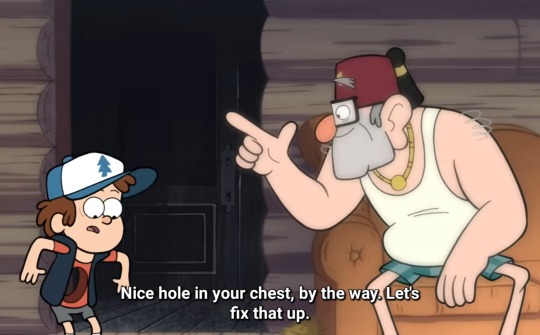
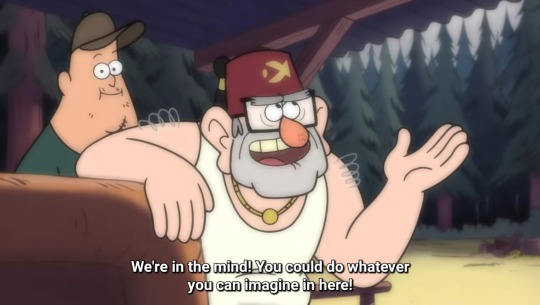

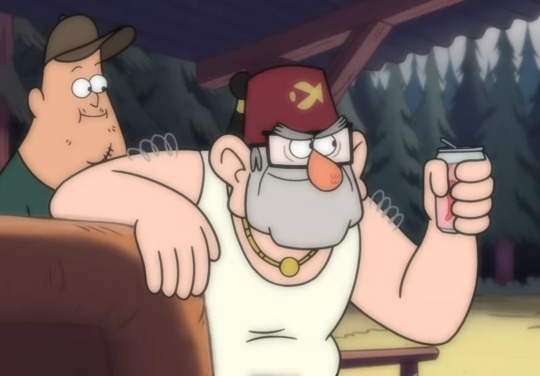
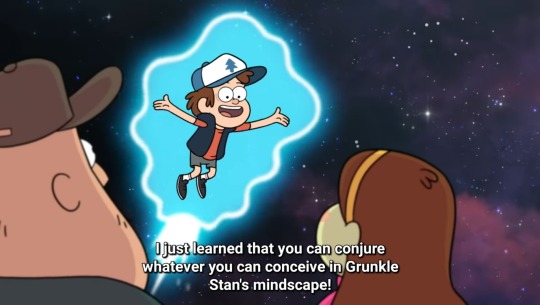

Meanwhile we have a memory!Stan. Someone who apparently knows too much and is rather aware for being a simple memory.
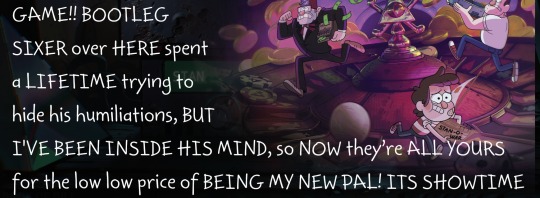
From the Wheel of Shame, we know Bill was able dig up all kinds of dirt on Stan but... that wasn't why he was there in the first place, was it?
Bill couldn't find the code immediately despite a memory of Stan opening the safe being a few hours old at most and decided to have Mabel try find it for him (The original concept of the ep had it far more hidden but this was likely cut because of time constraints)

Ford did experiments on Stan's mind which likely meant using Project Mentem and actually looking around his mindscape, and his only reaction was to comment on his jokes-- despite what little we the audience know being enough to render us sobbing wrecks
(yes I refuse to shut up about this part cos the book's intro is extremely underrated)
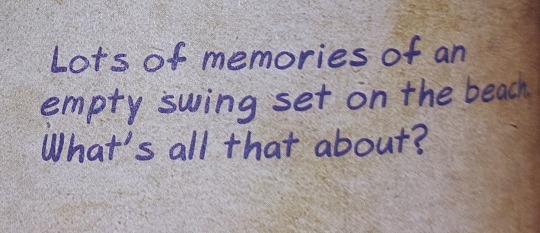
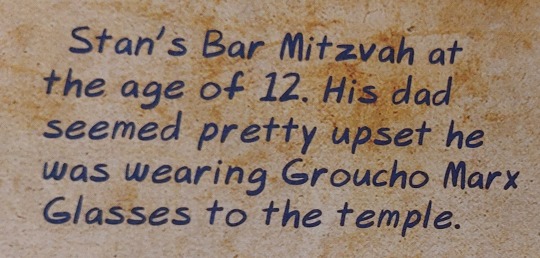
Stan was able to replace his memories of Ford with the swingset instead and managed to hide Ford in his Bar Mitzvah memory. And that's not even mentioning the lack of visible Portal and Stan o' War which noticeably show up in Ford's dreamscape (the broken swingset manifesting anyway pains me tho)
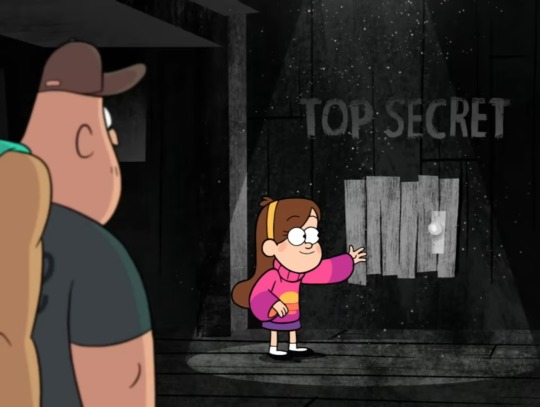
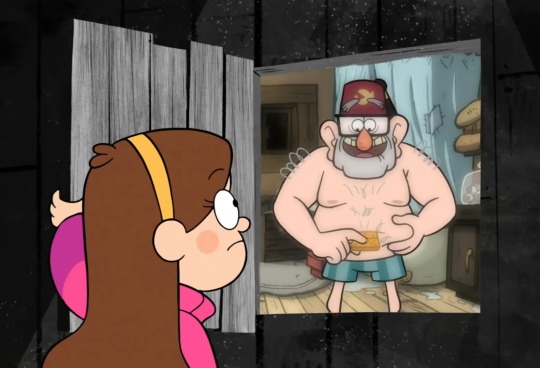
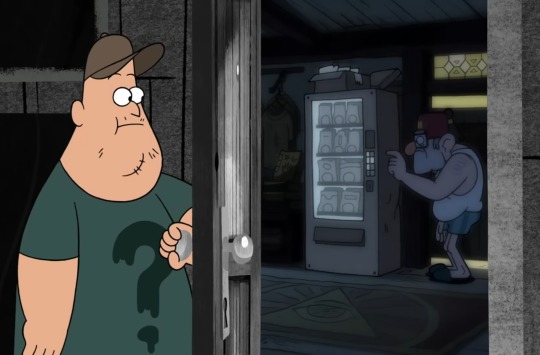
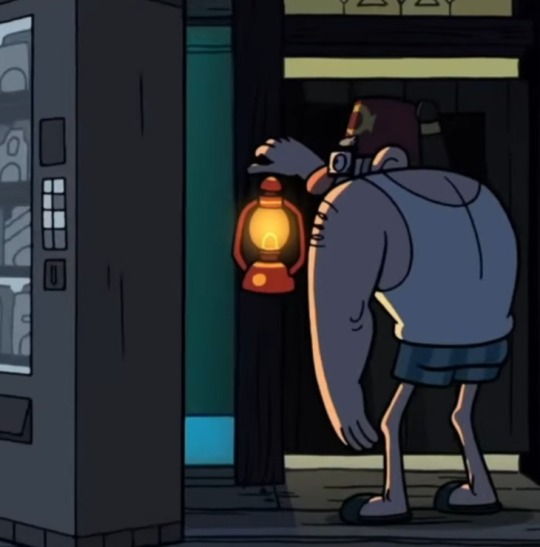
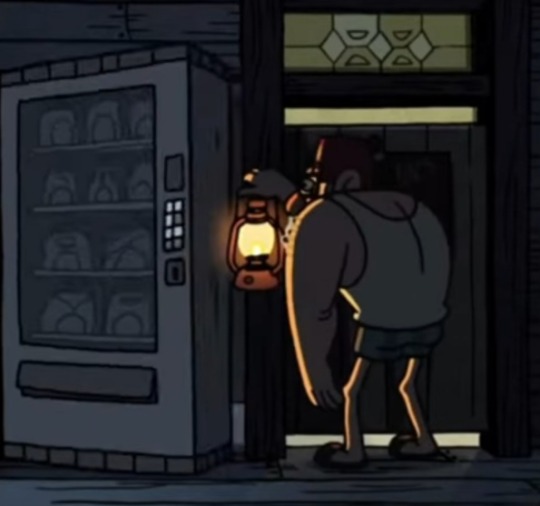
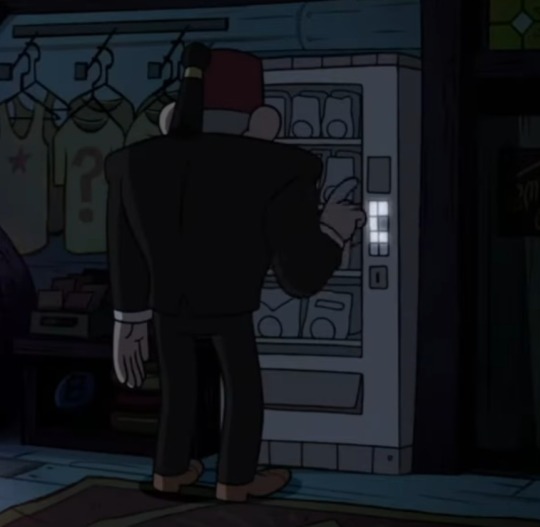
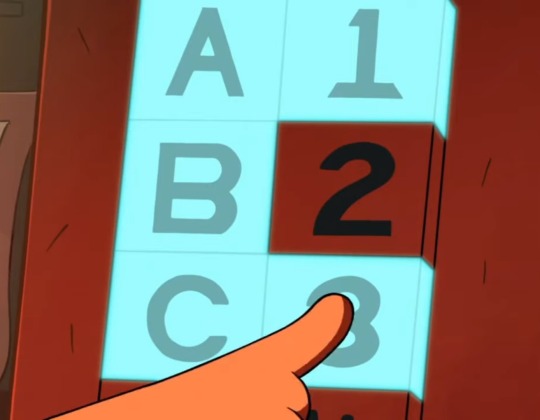
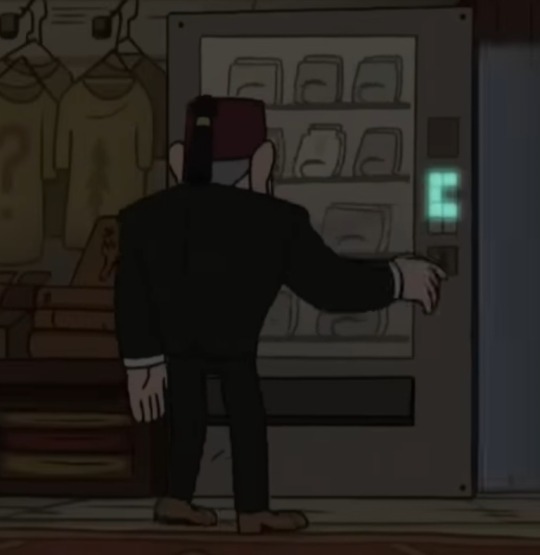
He subconsciously has misdirects for his secrets that are both silly and manages to disturb everyone too
And while Bill-as-Soos being bored by the vending machine memory is a joke that's basically the crew's way of going "hey remember the thing way back in the first ep that's going to show up in the next one?" and in-universe appears to be Stan slipping up, it's interesting that they had Stan input the wrong code when it's consistent literally every other time its inputted (especially when it shows up correctly in the very next episode)
It's even possible that the safe code that Bill found could have been a misdirect too but we'll never know since the safe got blown open by dynamite.
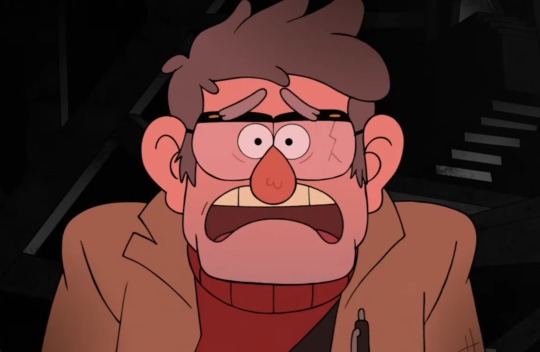
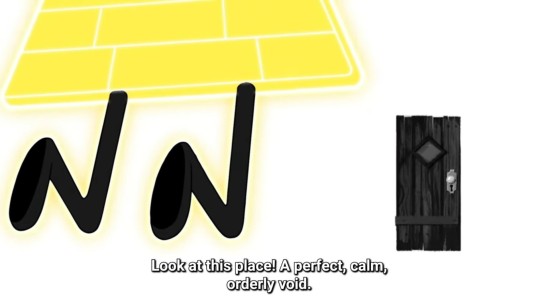
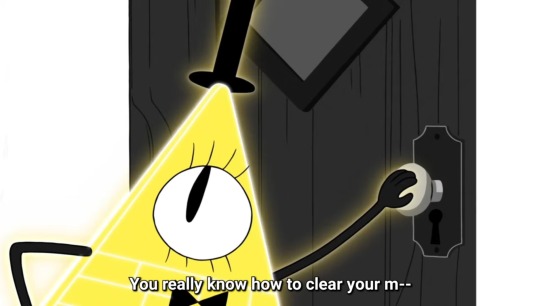
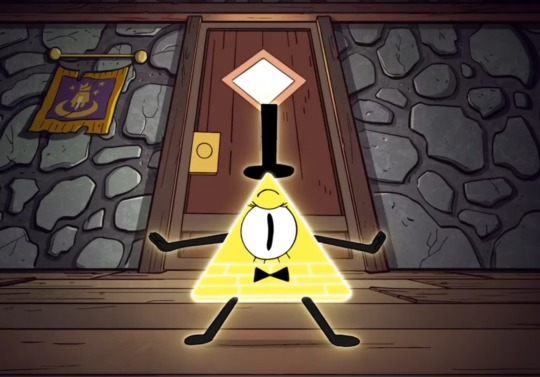
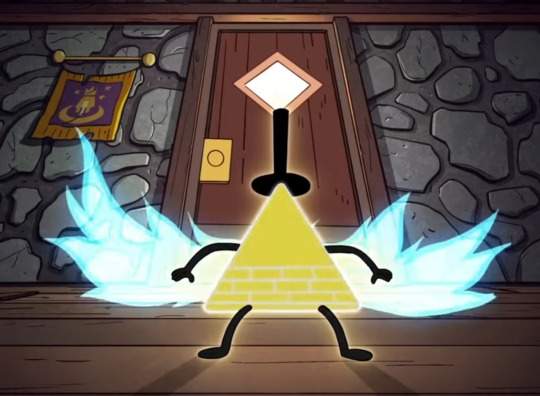
Stan was able to buy time by making his mind blank despite being genuinely terrified when Bill enters his mind (to the point that he breaks character and uses his own voice to yell), and could conjure up his living room (in colour opposed to his mind's regular greyscale) to make sure Bill didn't have enough room to flee, slamming the door in his face before the effects of the memory gun kicked in.
(EDIT: Random door analysis here)
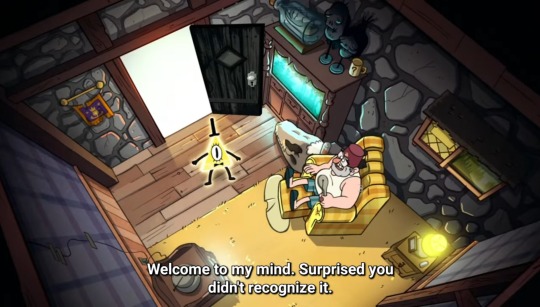
And maybe the twins eventually told him that Bill had already been inside his mind after their W3 reunion, but all we know was that his conscious self was left in the dark for ages and wasn't really aware of Bill until Weirdmageddon.
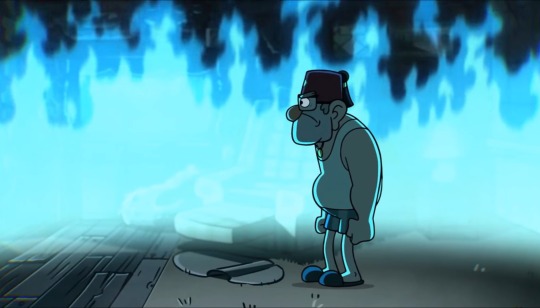
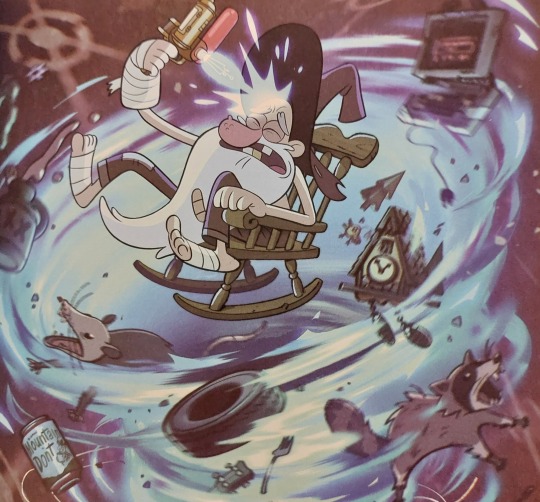

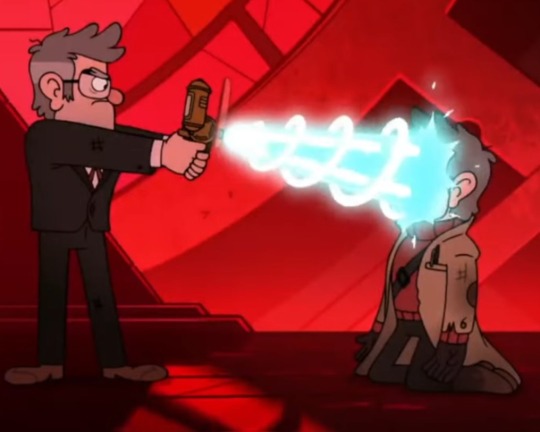
TBoB showing McGucket's dreamscape also brings up the idea of the effects of the memory gun manifesting differently to each person. To Stan's mindscape, the memory wipe manifests as blue flames which immediately brings to mind Bill's powers but it's a far lighter shade (maybe to more closely match the memory gun and its eventual fade to white?)
The end of TBoB and the website poem also firmly reminds us about Stan's connection to fire but there's also the question if Stan himself is actually aware of it...
#but also j3 having ford read dipper's entries post dd&md but not having him know about the kids' encounters with bill is so kashdskahd#cos that implies he immediately skipped the pages that mentioned stan 😭and didn't read mabel's entries#oh for him to actually react to dipper's observations about stan's mindscape....#stan pines#stanley pines#bill cipher#gravity falls#gf meta#yes of course my brain is still going ' same coin theory ooooo' at this#cos i doubt that j1 has any mention of the mindscape and it's not like stan would have studied this stuff#imagine iconic hippy hater actually mediating on purpose#i'm still waving my arms about stan potentially seeing the reader's version of tbob tho#but even if that ain't the case bill having a breakdown from him reading him like a book is still iconic#dunno if this is coherent and i'm pretty sure all this stuff is things most folks know but idk some people didn't read the journal#some folks don't know about the poem!!!! truly the biggest tragedy
2K notes
·
View notes
Text
God, if it WAS a timeloop, if Arcane Jayce has been experiencing version after version of The Horrors of not stopping Hextech, if him shooting Viktor isn't "killing" it's the final act of attempt after attempt after attempt at SAVING HIM I will walk of a ledge I swear, it's all coming together, I am a "Jayce was trapped in a time loop" truther now, I'm losing my damn mind. There is no way Jayce killed his partner unless another Viktor told him to do it or he has tried so many times over and seen the consequences of not doing so that he's completely broken, or he just knows from all those other versions that this is not Viktor or it's the only way to actually save Viktor... anyway I'm officially chewing glass and losing my mind I take back every version of "that is not Jayce" I am now a "That IS Jayce several decades of trauma later, trauma caused by trying over and over to save the world and save Viktor" I think we're going to be repaid for all of our "The goodbye was too brief" or "There was no emotion when Jayce killed Viktor" with an ENTIRE SEQUENCE that is just all the emotions Jayce has been pouring into trying to fix all of this any other way
Tune in next week at the end of my psychological breakdown to see if I was right or just ridiculous!
#jayvik#arcane#arcane spoilers#arcane meta#arcane act 3 predictions#i am fully losing my mind over this theory and possibility right now tysm
3K notes
·
View notes
Text
The fact that if you look closely, you can see both Jinx and Ekko's faces in the rose necklace Jinx/Powder had in the alternate timeline-


#arcane#arcane s2#arcane s2 spoilers#arcane season 2 spoilers#arcane meta#arcane season 2#arcane powder#arcane jinx#powder arcane#jinx arcane#arcane season two#arcane spoilers#arcane theory#arcane league of legends#timebomb#arcane timebomb#ekkojinx#jinx posting#jinx x reader#ekko arcane#arcane ekko#ekko x jinx#ekko x powder#with jinx#jinxekko
1K notes
·
View notes
Text




aggregation of several threads w/ similar observations
#sev notes#//#severance theories#severance meta#severance analysis#lumon industries#cold harbor#severance
3K notes
·
View notes